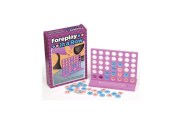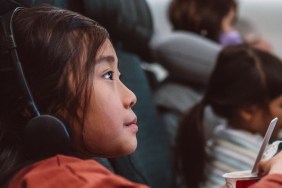If you had asked me a year and a half ago if I would ever consider homeschooling, I would have laughed until I cried. I’m a busy, working mom of three kids ages 11, 8 and 4 and the concept of homeschool has always seemed too much for me. I do not have a craft room dedicated to all the whiz-bang, Pinterest-inspired learning experiences that I thought homeschooling was all about.
But when the pandemic hit, my family felt forced into pulling our kids out of school since we could not safely accommodate the health needs of my oldest child. I’ve been figuring out what works (and what doesn’t) ever since. Here is a general breakdown of what my family does on a typical homeschool day.
I should note real quick that I am not a trained teacher nor an expert on homeschooling. This post is just a reflection of my personal experience. If you are looking to start homeschooling, my first piece of advice is to look up your state’s homeschooling laws to help you get started.

Morning Routines
We learned pretty fast that it’s just straight-up chaos at our house without a routine in place. Since my three kids are several apart in age and learning levels, predictable schedules mean that I can make sure everyone is where they need to be.
7:00 Breakfast and Free Reading
The kids get a choice between eggs and toast or oatmeal and fruit every day. While I am busy grabbing books and supplies and setting up my own workstation for my writing, the kids are busy eating and free reading. Free reading is a required 30 to 45 minutes of reading every day. They get to choose what they read and then document it in a reading journal.
8:00 to 11:00 Lessons
After breakfast and free reading, the kids are each assigned grade-appropriate work assignments. They have to complete math, reading skills, language arts, science, and civics every day. When they finish with those subjects in their workbooks, they can choose curated media learning such as virtual museum tours, podcasts, reading news articles, or listening to music.
We don’t always stick to workbooks. If I’m being honest, we all hate workbooks, and if I don’t break up the week with hands-on activities, then my kid’s mutiny and refuse to do their work. So, we keep a list of fun activities that they can choose from; this is our current list of activities:
- Building forts out of found, natural objects in the backyard
- Cooking and baking (including menu planning and clean up)
- Knitting and crochet
- Art projects (clay sculpture, print-making, painting, etc.)
Lunch and Free Play
The kids take an active role in helping lunch get on the table, which is great for me because, by lunchtime, I am fielding emails from editors and frantically trying to hit tight deadlines.
Free play is usually in our backyard, but we stop everything and jump in the car a few times a week to get out of the house. Since we live near the coast, we spend a lot of time hanging out at the ocean’s edge, exploring harbors and beaches. There are plenty of forests near us, so we spend a great deal of time wandering through the woods. I generally count this as PE, and the kids love it.
In the beginning, I thought that homeschool had to look like a regular school. That misconception created a ton of stress and resentment on all sides, so I reached out to other homeschooling families to see what I could do to have a peaceful learning experience at home. Here are my best pieces of advice that I wish someone had told me right out of the gate.
- Before you do anything, find out what the state standards of learning are. What skills should your child master by the end of your homeschool year?
- What are your children’s interests? If they aren’t excited about the material they are learning, then they just won’t care. For example, my oldest hated dividing with fractions, but he loves baking. So, we figured out how to combine the two, and he learned the practical application for that particular math skill; math became much more effortless.
- Teaching your kids life skills counts as school. Does your child have an allowance? Use that to teach financial literacy. Does your kiddo love to play in the dirt? Grow a garden and learn about life science. Not every lesson or subject has to be taught from a workbook, although those do help!
- You don’t have to spend hundreds of dollars on a curriculum. I spent maybe $50 on the workbooks for my three kids. Just make sure you choose a reputable publisher like Houghton Mifflin, for example. And check that the workbook meets state standards; it will say right on the book.
- Your local librarian has a million free resources to help make learning super fun for you and your kids.
- You’re allowed to take days off. If everyone is having a crap day and no one is learning a thing, then pause and reconnect with your kids before trying again.
We won’t homeschool forever, but I am glad to know that when we need to, we can. And watching my kids thrive while they learn about the things that genuinely excite them has taught me a thing or two about how capable and bright kids really are.








